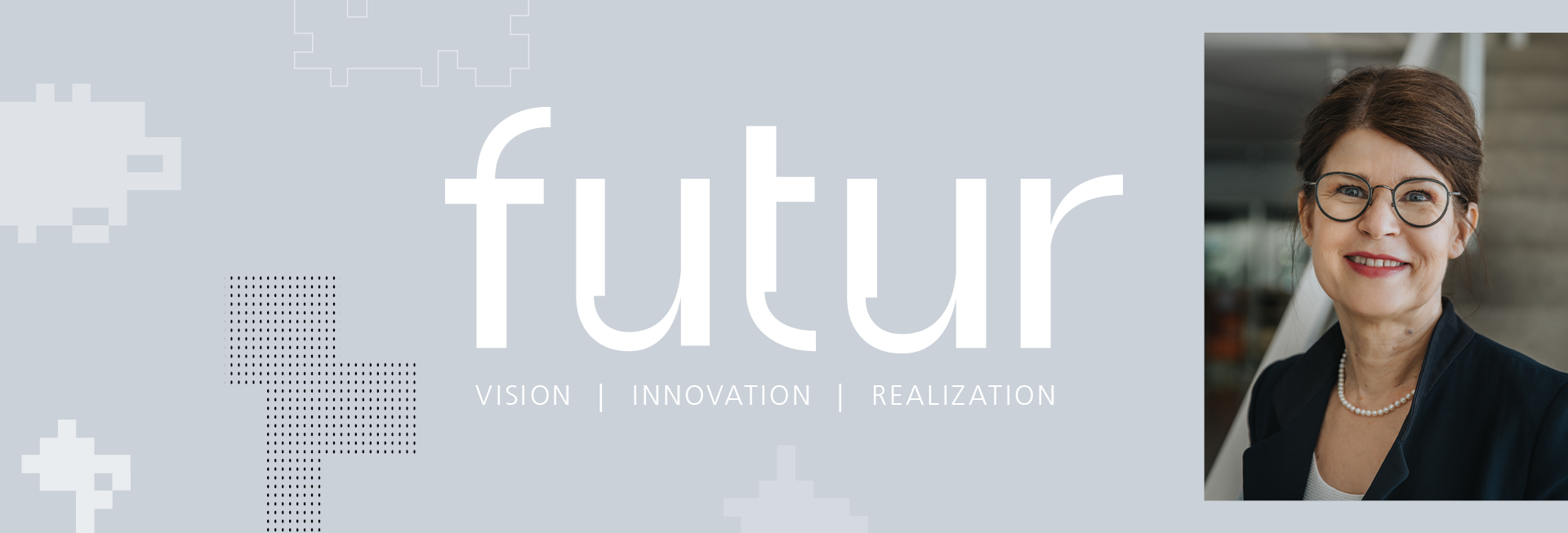The Brain as a Model
Brain research and technological development are driving each other forward. With the help of neuro-inspired technologies, supercomputers, and artificial intelligence, we can continuously deepen our understanding of the complexity of the human brain.
Neuro-inspired technologies mimic certain principles of the structure and functioning of the human brain, and have led to breakthroughs in the fields of supercomputing, data science, and machine learning. Conversely, neuro-inspired technologies can also help us learn a great deal about how the brain works.
One example is the European Human Brain Project (HBP). In this project, researchers from more than 122 research institutions from 17 countries are working together to link brain research and information technology. We want to understand the human brain in its multi-level complexity in time and space down to the smallest detail, and put this knowledge to use in medicine, computer science, and technology. Supercomputers and artificial intelligence help the project’s neuroscientists analyze the massive amounts of data required for this purpose. For example, we were able to create an anatomical model of the human brain with a resolution of 20 micrometers from thousands of digitized histological sections of the brain. The model provides valuable insight into the architecture of the brain and enables us to better understand diseases and treat them in a more targeted fashion. But new insights from brain research not only advance medicine – they also contribute significantly to the development of new, powerful, and energy-efficient AI and computing technologies.
For example, when it comes to learning something quickly (»single shot learning«) or constantly refining what was previously learned (»life-long learning«), artificial intelligence still lags significantly behind human intelligence. Furthermore, the brain is extremely space- and energy-efficient as compared to powerful computers – properties that are particularly important for the use of artificial intelligence in mobile applications. For example, our brain requires less energy than a 30-watt light bulb for highly complex information transfer and processing. It thus consumes only in a range of one millionth of the energy a supercomputer does. This is due to the fact that nerve cells communicate with each other particularly efficiently using electro-chemical transmission. They do so by using these electrical impulses, known as spikes, extremely sparingly.
On the other hand, there are many types of calculations where supercomputers perform many times faster. Better understanding these functional differences is a matter of interest for both computer science and brain research.
Our brain requires less energy than a 30-watt light bulb for highly complex information transfer and processing.
Researchers at the Human Brain Project at Graz University of Technology have drawn inspiration from findings in brain research to develop a new learning algorithm for artificial intelligence. Similar to the brain, the individual cells of the artificial neural network are only activated when their impulses are actually needed to process information. In future, the learning algorithm will be integrated into a chip by the manufacturer Intel as well as into the SpiNNaker system, the world’s largest neuromorphic computer architecture.
SpiNNaker was developed by scientists at the University of Manchester. The system’s structure is based on that of a biological nervous system and comprises one million processor cores. This means it has the capacity to simulate the neuronal activities of a mouse brain. The system is openly available to researchers worldwide via the EBRAINS digital infrastructure, which was developed as part of the Human Brain Project, and holds enormous potential for brain research, computer science, and robotics.
Working with a research group at Dresden University of Technology, the Manchester team recently developed an AI chip called SpiNNaker2 as part of the Human Brain Project. The chip exhibits unparalleled efficiency and sub-millisecond latency for event-based systems. It is to be installed in a computer system with 10 million processor cores at TU Dresden. There, it will be tested in applications for autonomous driving, data traffic in smart cities, tactile Internet applications, and biomedicine. Furthermore, the chip will soon be commercialized via the Dresden-based startup SpiNNcloud Systems.
Prof. Dr. med. Katrin Amunts

was elected as scientific leader of the European flag-ship Human Brain Project (HBP) and became scientific research director in 2016. She is professor for brain research at the C. and O. Vogt Institute for Brain Research at Heinrich Heine University in Düsseldorf, Germany, as well as director of the Institute ofNeuroscience and Medicine at Forschungszentrum Jülich, Germany. Her research focuses on organizational principles of the human brain and how its structure relates to function and behavior. At the beginning of her career, Katrin Amunts worked as a research assistant in the Machine Vision department under the leadership of Dr. Bertram Nickolay at Fraunhofer IPK in Berlin in the early 1990s. »I was able to draw a great deal of useful information for applications in brain research from the methods of image analysis and the various industry approaches that I became acquainted with at Fraunhofer IPK. Even in my latest research, I am using a method that I learned during my time in Bertram Nickolay’s department.«
 Fraunhofer Institute for Production Systems and Design Technology
Fraunhofer Institute for Production Systems and Design Technology